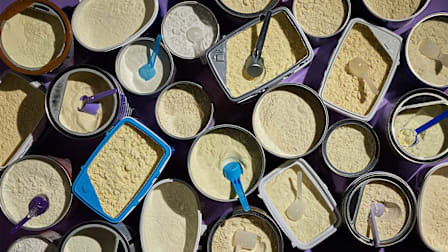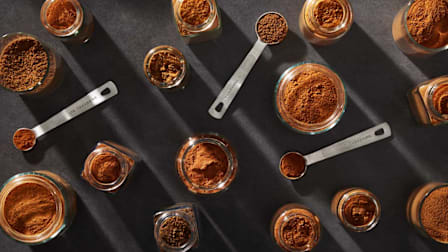Lead and Cadmium Are Common in Chocolate, Especially Organic
A new study finds heavy metal contamination has been an issue in chocolate for years, but there are ways to limit your risk

Dark chocolate has been contaminated with the heavy metals lead and cadmium for years, according to a study published today in the journal Frontiers in Nutrition.
Between 2014 and 2022, the team behind the study tested 72 different dark chocolate products four times. They detected potentially concerning levels of lead and cadmium in many dark chocolate products, which could be an issue for frequent chocolate eaters and vulnerable groups, such as small children.
What the Study Found
Researchers looked at test results from ConsumerLab.com, which tested dark chocolate products in 2014, 2016, 2018, and 2022. In each round of testing, 72 products were evaluated, with a focus on products containing dark chocolate. This wasn’t limited to dark chocolate bars; it also included cocoa supplements, dark chocolate chips, cocoa mix, and cocoa powders. There was some variation in the products tested each year.
The average lead and cadmium levels in products tested exceeded a threshold based on California’s Proposition 65 maximum allowable dose level (MADL) for lead (0.5 micrograms a day) and cadmium (4.1 mcg a day). This is one of the strictest standards available for heavy metals in food, though the state’s legal limit for chocolate is currently higher.
The average level of contamination in the study appears to have exceeded that threshold largely because of the influence of heavily contaminated outliers. Many products tested didn’t exceed those levels.
Because the researchers in the new study began testing chocolate in 2014, their results show that heavy metal contamination in chocolate began long before CR’s tests made it widely known a few years ago. This adds important context to CR’s past findings, says Leigh Frame, PhD, director of integrative medicine and co-director of the Frame-Corr Lab at George Washington University in Washington, D.C., and senior author of the study.
Plus, it shows that things have not really gotten better over time, Frame says. CR’s experts, who were not involved in the study, agree. “It doesn’t appear the levels for lead and cadmium have changed all that much from 2014 to our last study in 2023,” says Eric Boring, PhD, a CR chemist who oversaw our 2023 chocolate tests.
Heavy Metals in Organic and Non-Organic Chocolate
Researchers from GWU helped analyze the data to see whether there were any meaningful differences from year to year (there weren’t) or among products with more trade certifications, such as “Non-GMO” or “Fair Trade” (again, they didn’t find any). But they did discover significant differences between organic and non-organic chocolate products: The organic chocolate products tended to have higher levels of heavy metals overall. This was a subtle but consistent difference, Frame says.
While the research wasn’t designed to explain why this might be the case, it does suggest that heavy metal-containing pesticides are likely not the main contributor to heavy metals in chocolate, says Frame. Previous research has suggested that lead contamination often occurs post-harvest—for example, when dust that contains lead accumulates on the pods.
Perhaps, Frame says, some form of gentler processing—whether that means leaving cacao beans to dry outside longer or cleaning beans differently—creates opportunities for lead pollution to accumulate on beans used to make organic chocolate or doesn’t remove as much lead.
But it’s too soon to know for certain. And in CR’s previous tests, we didn’t see significant differences between organic and inorganic chocolate.
Takeaways for Consumers
No one wants to think about heavy metals in their sweet treats. The levels detected here—like the levels found by CR in previous tests—are concerning but not something to panic about. (You can also use CR’s past test results to choose products with lower levels of heavy metals, especially if you eat chocolate daily.)
The average or mean levels of products tested exceeded the California MADL levels. But most products didn’t have levels that high. Overall, 43 percent of the products tested exceeded the California level for lead, and 35 percent exceeded that level for cadmium. In other words, the average person eating one serving of a random piece of chocolate from these tests is not likely to exceed that MADL level from chocolate alone.
Someone is more likely to exceed these levels if they consume the same product all the time, and that product tends to be a chocolate with higher levels of heavy metals—or if someone eats multiple servings of chocolate, which could add up to concerning levels.
"Chocolate and cocoa are safe to eat and can be enjoyed as treats as they have been for centuries," the National Confectioners Association, a trade group representing chocolate manufacturers, said in a statement.
Still, of course, chocolate is just one part of the average person’s heavy metal exposure. Other foods contain heavy metals: sweet potatoes, carrots, and other root vegetables often contain lead; spinach can often contain cadmium. People may also be exposed to metals from industrial facilities near their homes, lead in dust, pipes, old paint, and other sources.
In general, to limit risk, people should make sure they eat chocolate in moderation, Boring says. People at higher risk may especially want to be aware of this, Frame suggests. This could include anyone who knows they may be exposed to heavy metals from other sources, or vulnerable populations, including kids and people that are pregnant. Varying brands can also help to limit exposure if it turns out that one particular brand is worse than others.
But all in all, “don’t panic,” Frame says. “I eat chocolate. I ate chocolate last night.”
Editor’s Note: This story was updated to include a statement from the National Confectioners Association.




















